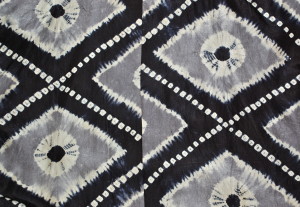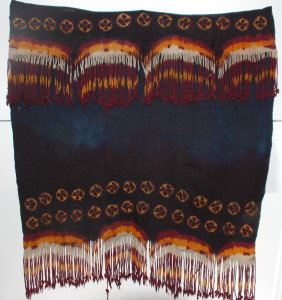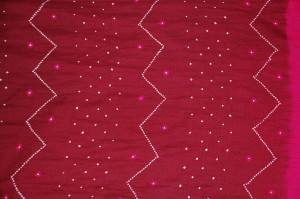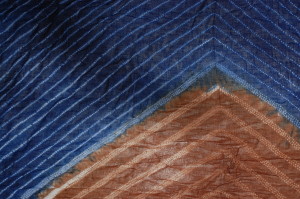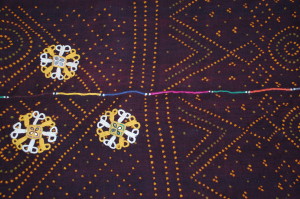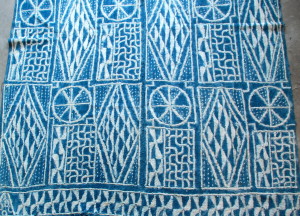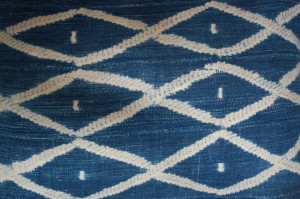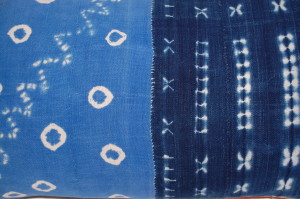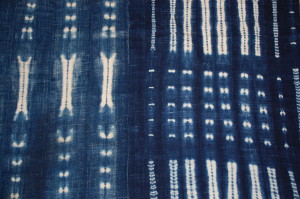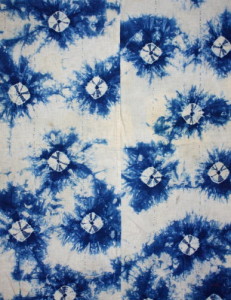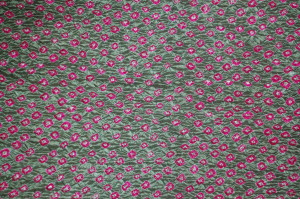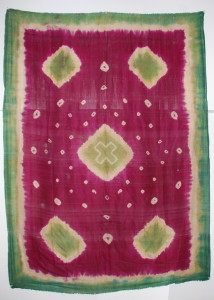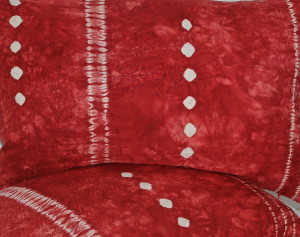Japanese shibori, plangi from Indonesia and ancient India bandhani are shape resist dyed textiles.
When manipulating cloth by gathering and binding before dying, it creates a texture throughout the cloth with a sculptural distinctive pattern and appeal.
You can find great diversity in the contorted forms of tie dyed cloth with much relevance to its history.
Different forms of tie-dye have been practiced in India, Japan, and Africa for centuries. The earliest surviving examples, include pre-Columbian alpaca,
found in Peru, and silk from fourth century Chinese tombs.
